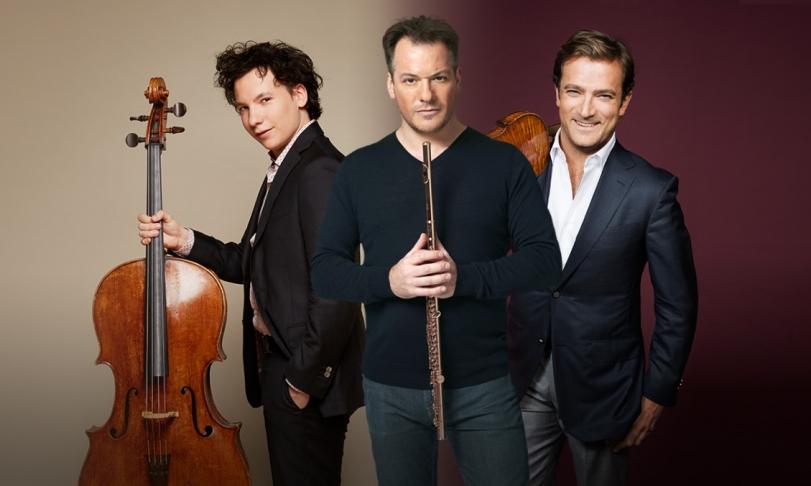
Especially in the production of chamber music again and again it is drawn at the carrier sales promising old recipe to invite the best soloists in their field ad hoc in front of the microphones. Of course, they have prepared for this event with similar care to their solo performances. There is no lack of ability and willingness. If, however such a project will bear artistically savory fruits is questionable. Ultimately, the ladies and gentlemen of the highest soloist’s line-up compete against chamber music ensembles, which over years have worked out a common style, and which together constantly penetrate compositions, finally bringing them to maturity. Against such ensembles, ad hoc soloist associations find it difficult to define the competition. Not infrequently, they lose out against the competition of specialized in chamber music ensembles. Exceptions prove the rule. And there is an exception in the case of Chamayou / Pahud / Capuçon / Moreau / Caussé / Langlamet, all of them pf French origin and celebrating triumphantly in different staff compositions Debussy's one hundredth birthday on March 25, 1918 with an album dedicated exclusively to the French composer.
The violin sonata from 1917 probably requires least of all the chamber music works assembled on this album a chamber music experienced team. Kyung-Wha Chung and Radu Lupu are a positive example from the past that concert soloists are well able to present a duo in chamber music tone and style. The highly virtuosic approach of these two artists, which manifests itself not least in extreme dynamics, is surprisingly completely ignored by Messrs. Capuçon and Chamayou in favor of a profoundly chamber-musical presentation of the sonata, in which neither dominates nor plays out his virtuosity. The fact that the two Frenchmen, despite all their chamber music balance, also play out the sonority's typically French inherent elegance, is appropriate and certainly in the spirit of Debussy, who, with his late work, wanted to counterbalance Schoenberg, Berg and Webern not at least for political reasons.
The cellist Edgar Moreau joins the duo in the violin sonata in the 1880 trio. Here you can hear more Massenet, Franck and Fauré than Debussy, who only later developed his own language as a composer. That is enchanting music convincingly youthful freshly presented by Capuçon, Moreau and Chamayou. Edgar Moreau and Bertrand Chamayou masterfully craft the Cello Sonata with its jazzy improvisation slow movement and its unusually high technical demands on the cellist. Featuring Gerard Caussé, viola, Marie-Pierre Langlamet, harp (the only woman in the ensemble) and the solo flutist of the Berlin Philharmonic Emmanuel Pahud, the only one on this album to be an eloquent soloist in a real pearl of flute literature, Syrinx, written in 1913 we experience Debussy's sonata for flute, viola and harp. This recording tops thirty-year-old recording with the Melos Ensemble hitherto acknowledged as reference through a more differentiated gait, through numerous magical moments and through the chamber musical fusion of instrumental sound that seeks its equals.
This album conveys pure listening pleasure throughout. Too bad that the two works with flute were recorded in an extremely reverberant room, which in the louder passages of the sonata for flute, viola and harp here and there obscures overview of the sound events. Nevertheless, a must have.
Bertrand Chamayou, piano
Emmanuel Pahud, flute
Renaud Capuçon, violin
Bertrand Chamayou, piano
Edgar Moreau, cello
Gerard Caussé, viola
Marie-Pierre Langlamet, harp
Renaud Capuçon, violin










